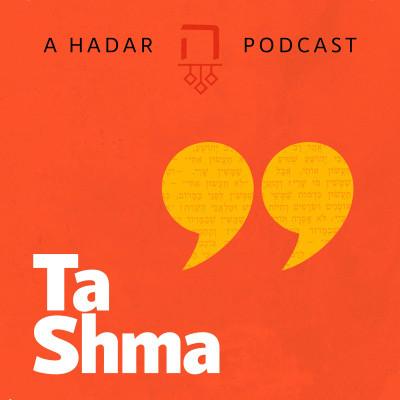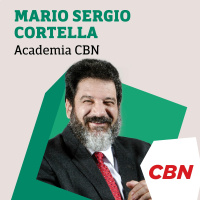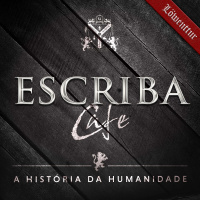Sinopsis
Welcome to Mechon Hadar's online learning library, a collection of lectures and classes on a range of topics.
Episodios
-
R. David Kasher on Parashat Balak: The View From Above
17/07/2024 Duración: 13minBalak, King of Moab, has been made uneasy by Israel’s recent string of victories over enemy nations, and has begun to worry that he will be the next to fall before them. He decides to seek the advantage with a preemptive strike, hoping to weaken the Israelite forces before they have a chance to advance against him. His first plan of attack, however, is not military, but magical: he will hire Bilaam, a local prophet, to curse Israel, and thus doom them to defeat. Bilaam seems open to the task and, after several stops and starts—including an incident with a talking donkey—he heads out to perform the curse. But when he opens his mouth to unleash the curse, the spirit of God takes over and, instead of cursing Israel, he blesses them.
-
R. Ethan Tucker: The Multivocality of Halakhah
15/07/2024 Duración: 01h10minHalakhic works are often a dizzying compendium of multiple perspectives on a given issue, often making it difficult to determine how to behave in a given situation. In this lecture, R. Ethan Tucker argues this is a feature rather than a bug. Critical values that are meant to guide our lives are rarely fully manifest in any given time, place, or situation. It is our job to discern the wisdom of each voice and allow that wisdom to make a claim on us, rather than submitting ourselves to one path. Recorded at the Halakhah Intensive, May 2024.
-
R. David Kasher on Parashat Hukkat: Language Falling on Language
10/07/2024 Duración: 10minThere is probably no more playful instance of wordplay in all the Torah than the nehash nehoshet, the copper snake described in Parashat Hukkat. With its string of repeated consonants, it sounds like it could be another of Dr Seuss’ whimsical creations, living in the same strange zoo with “the Cat in the Hat,” “Yertle the Turtle,” and “the Fox in Socks.” Yet the nehash nehoshet appears in the midst of a story that is anything but whimsical. In chapter 21 of the Book of Numbers, the Children of Israel have once again questioned the decision to leave Egypt. God, once again outraged by their ingratitude, sends a den of deadly snakes to attack. The people ask Moshe to pray on their behalf, he does, and God responds with a strange solution.
-
R. Dena Weiss: Serving God From Yuck to Yum
08/07/2024 Duración: 46minRav Dena explores a Hassidic teaching from the Me'or Einayim which discusses a dimension of physicality that we rarely pay attention to: given that taste is not necessary to sustain us, why is food delicious? More perplexingly, why does some food taste good to some, but not to others? What is the relationship between what is physically nutritious and what is spiritually nourishing? Recorded at the Winter Learning Seminar, 2024.
-
R. David Kasher on Parashat Korah: Hevel’s Revenge
03/07/2024 Duración: 09minFrom the very beginning of Parashat Korah, the Torah places unusually strong emphasis on his lineage. He is introduced not just with the standard patronym, but with three generations of ancestors, tracing him back to the tribal founder, Levi. A midrash in Bemidbar Rabbah picks up on this extended chain of forebears and suggests that it is there to alert us to the underlying motivation for Korah’s confrontation with Moshe.
-
R. David Kasher: Midrashic Moves
01/07/2024 Duración: 01h09minThe genre of midrash has a reputation for taking creative license. In midrash, we come across the wildest stories our Rabbis ever told, and it sometimes feels like they can say anything. Yet the midrashic method was guided by precise rules of interpretation as well as general norms of discourse. But who keeps track of the rules and who monitors the discourse? Can a midrashic interpretation ever be deemed beyond the limits? Recorded at the Rabbinic Yeshiva Intensive in March 2024.
-
R. David Kasher on Parashat Shelah: Uncovering the Spies
26/06/2024 Duración: 12minThe big story in Parashat Shelah is the story of the spies. The people are nearing the Land of Canaan, and Moshe sends ahead men, one from each tribe, to cross the border, check things out, and then bring back a report. So they head out for 40 days, return safely—and, at first, all seems well. They confirm that the land, as promised, “flows with milk and honey” (Numbers 13:27). But then the conversation turns. They begin to spill out all kinds of fears: the cities are fortified, the people are gigantic, and the land… “devours its inhabitants” (Numbers 13:32).
-
R. Dena Weiss: The Torah is in the Details
24/06/2024 Duración: 01h24sTraditionally, the fabric of Jewish observance is composed of 613 mitzvot and many many more granular instructions. To some of us, these small details are a core piece of what it means for us to serve God, while for others of us these details seem like both an abstraction and a distraction. Does God really care about ounces and inches?! Recorded as the introduction to the Rabbinic Yeshiva Intensive in March 2024
-
R. David Kasher on Parashat BeHa’alotkha: Prophecy—A Family Business
19/06/2024 Duración: 09minMoshe’s unique status as the greatest prophet of Israel is challenged twice in this week’s parashah—but in neither case does Moshe himself seem to care.
-
R. Shai Held: Love, Compassion, and the Future of Jewish Life
17/06/2024 Duración: 57minWhat is Judaism ultimately about? What vision of the good life does it offer us, and why might that vision be especially crucial during these dark times? This discussion of Rabbi Shai Held's new book, Judaism is About Love, was held at Congregation B'nai Jeshurun in New York City on March 26, 2024, with Rep. Jamie Raskin, facilitated by Sandee Brawarsky.
-
R. David Kasher on Parashat Naso: Out of the Camp
14/06/2024 Duración: 15minParashat Naso is thematically structured in the form of two “exterior” chapters and two “interior” chapters. A careful study of this design can provide insight into the larger significance of “מחנה ישראל - the Camp of Israel.”
-
R. Avi Strausberg on Shavuot: Forgetting the Torah
10/06/2024 Duración: 07minWhile I love learning Torah, I have a very poor memory for it. More often than not, when I re-encounter a piece of Torah that I have surely learned before, it’s as if it’s for the first time. Given on the one hand, my love for Torah and a genuine desire to learn Talmud and Midrash, Hasidut and Musar, and on the other, the inevitability that I will forget all of this Torah I learn, I find myself wondering on this Shavuot, what is the point? What is the point of staying up late all night long learning Torah that I know at worst by next year’s time I will have already forgotten and, at best, will just become a shady shift-shaping memory of something I once learned? Often I have the experience of feeling the shadows of Torah I once learned shimmering on the peripheries of my brain, so close and so far, unable to be recalled into concrete existence.
-
R. David Kasher on Parashat Bemidbar: Naked as the Desert
05/06/2024 Duración: 12minThe five books of the Torah—like the 54 parshiyyot—are by tradition each named after their first significant word or phrase. In the case of the fourth book, the name is taken from half of a semikhut (construct) phrase: “בְּמִדְבַּר סִינַי - in the Sinai Desert” (bemidbar Sinai). The custom has developed to use just the first of the two words: bemidbar, meaning just: “in the Desert.” That leaves us with a particularly evocative title, one that casts us out into a vast unknown, and vaguely suggests impending danger.
-
R. Avi Strausberg on Pride Month 2024: Take This With You
03/06/2024 Duración: 05minI am blessed to have three kids, aged 9, 6, and 2—this means a lot of first days of daycare and school. These first days are always exciting for us and for them. We know that they will make new friends, have new experiences, grow and learn in unimaginable ways. Yet they are also days filled with trepidation; they set off for new and unknown experiences for which we can’t accompany them. On each of these days, we tuck a family photo in their backpack in a safe place. With this gesture, we are trying to say: “Take this with you. We will be with you whenever you need us. We hope that that photo can be a source of love and strength and comfort throughout the day.”According to the Zohar, the rainbow from the story of the Flood tried to look after Moshe in the same manner that we try to look after our children.
-
R. David Kasher on Parashat BeHukkotai : The Purloined Letter
29/05/2024 Duración: 10minOne of Rashi’s comments in this week’s parashah highlights the rabbinic tradition of interpreting a feature of Hebrew script known as “אותיות חסירות ויתרות” (otiot haseirot v’yeteirot), “missing and extra letters.” The Hebrew alphabet has no vowel letters, and in most Hebrew writing, the vowel notations (nekudot) are not included; we know how to pronounce words based on context and tradition. But certain vowels are sometimes “carried” by a silent letter, either a vav (ו) or a yod (י). In writing words with those vowels, common practice dictates whether they are written with the silent letter or not. When the writing deviates from common practice, we get the phenomenon of “missing and extra letters,” known in Latin as “defective” and “plene scriptum.” For our Rabbis, who presumed every letter in sacred scripture to have been carefully and intentionally selected, an extra or a missing letter was understood to be an encoded message, waiting to be deciphered.
-
R. Avi Strausberg on Lag Ba'Omer: From Wave to Wave to Wave
26/05/2024 Duración: 09minWhen my dad died in my early 20s, I remember being wowed by the ways in which grief came in waves. One minute, I was crying and couldn’t imagine ever moving through my sadness and several hours later, I was surprised to find myself laughing—actually able to laugh—within the first days of my dad’s death. With confidence, I realized, this was the way it was going to be. Each time that I cried and each time that I laughed, I knew it wouldn’t be the last time. The grief and the joy—they would keep coming in turns, like waves rolling in and out in their own time.
-
R. David Kasher on Parashat BeHar: The Fragrance of Freedom
22/05/2024 Duración: 09minOne of the hallmark Rabbinic interpretive techniques is the identification of parallel wording in two different sections of the Torah. In legal interpretation, this is the foundation for the second of R. Yishmael’s “13 principles by which the Torah is interpreted”: the gezeirah shavah, or “the rule of equivalence.” This principle, first quoted in the name of Hillel the Elder, posits that if the same word or phrase appears in two distinct legal cases in the Torah, that is an indication that we can apply the parameters of one law to the other. The original and paradigmatic form of the gezeirah shavah was one in which the word in question appears only twice in the entire Torah. When there is only one other location that a linking word takes us to, then the inference from one context to the other becomes especially strong.
-
R. Avi Strausberg on Pesah Sheini: Demanding a Seat at the Table
20/05/2024 Duración: 11minI am lucky to live a life with no food sensitivities. I can eat what I want and I’m happy to be an “easy guest,” quick to assure hosts that I have no special food needs. However, several years ago, in an attempt to identify the cause of my migraines, I found myself a person suddenly with many food sensitivities I was told to avoid. I went from being a person who could eat everything to a person who approached each meal with anxiety, wondering what food I would find to fill myself up. I was no longer the easygoing guest able to eat whatever was served to me. Rather, in people’s homes, at conferences, in restaurants, if I was going to eat, I needed to advocate for myself. I needed to speak up and ask for what I needed. I found this experience very challenging: I felt uncomfortable identifying my list of food sensitivities; I felt awkward being on the receiving end of special accommodations. “I would make do,” I thought, “I would manage.” What happened to being the “easy guest” I pride myself on being?
-
R. David Kasher on Parashat Emor: Recounting the Omer
15/05/2024 Duración: 14minEvery year, by good calendrical fortune, we read in Parashat Emor the commandment of Sefirat ha-Omer, the “Counting of the Omer,” during the period in which we actually count the Omer. This moment of sync between reading and ritual presents us with an opportunity to recognize our contemporary practice as continuous from the words of the Torah. Yet when we begin to read through those words, we quickly see that our counting ritual today looks very different from the original mitzvah.
-
R. Avi Strausberg on Yom HaZikaron/Yom Ha'Atzma’ut: At a Distance
13/05/2024 Duración: 09minI have always found it difficult to find an observance of Yom HaZikaron and Yom Ha’Atzma’ut that feels meaningful and authentic as a Jew living in the Diaspora. In Israel, the observance of these holidays is effortless and all-encompassing: you simply have to be present and you are in it, flowing from the intensity of Yom HaZikaron to the joy of Yom Ha’Atzma’ut. It’s the music on the radio, it’s the tzfirah (siren) in the streets that brings everything to a halt in a moment of silence, it’s the communal get-togethers on Yom Ha’Atzma’ut. In America, I feel far from all of these observances. In my home, on these days, we tune into Israeli radio, we stop for the tzfirah, we try to make that tricky transition from grief to joy as Israel moves from a spirit of mourning to celebration. But, I am distant. Short of a couple of pieces of liturgy on Yom HaZikaron and hallel and a special Haftarah for Yom Ha’Atzma’ut, there is little to mark these days outside of Israel. If I’m honest, my observance of these days














